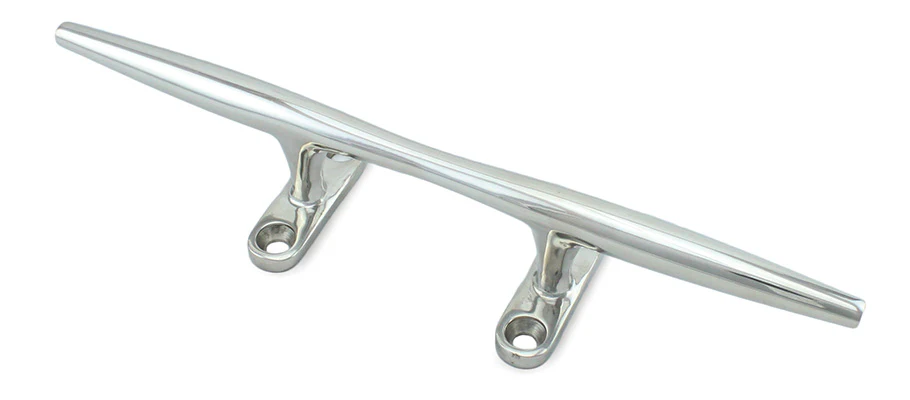- English
- Español
- Português
- русский
- Français
- 日本語
- Deutsch
- tiếng Việt
- Italiano
- Nederlands
- ภาษาไทย
- Polski
- 한국어
- Svenska
- magyar
- Malay
- বাংলা ভাষার
- Dansk
- Suomi
- हिन्दी
- Pilipino
- Türkçe
- Gaeilge
- العربية
- Indonesia
- Norsk
- تمل
- český
- ελληνικά
- український
- Javanese
- فارسی
- தமிழ்
- తెలుగు
- नेपाली
- Burmese
- български
- ລາວ
- Latine
- Қазақша
- Euskal
- Azərbaycan
- Slovenský jazyk
- Македонски
- Lietuvos
- Eesti Keel
- Română
- Slovenski
- मराठी
- Srpski језик
How to Choose Boat Cleats for Your Boat
If you have a boat, you're going to need to tie it up. Boat and dock cleats provide convenient locations to secure lines quickly and easily. There are many different types and arrangements of boat cleats available to customize your mooring experience. We will look at a selection of these and provide some advice along the way.
Materials
Boat cleats are made from a wide range of materials:
•wood
•nylon
•aluminum
•galvanized steel
•stainless steel
Choosing a material largely depends on the purpose of the cleat; a small wooden cleat may look nice as an accent, but would likely be appropriate only to hang a fender from, while a sturdy steel cleat with a backing plate would be suitable for main bow or stern dock lines. Get a cleat strong enough for the job, and with the variety out there, you'll not likely have to compromise on looks either; a stainless steel cleat, for example, is very strong and looks great just about anywhere!

Types
Here’s a list for you: dock cleat, deck cleat, portable cleat, jam cleat, cam cleat, flip-up cleat, pop-up cleat, pull-up cleat, solar light cleat, Samson post, mooring bollard – oh my! All of these are tackle used for securing lines of one kind or another. Most boaters will be familiar with at least some of these, especially the typical two-horned deck or dock cleat, which is suitable for just about any situation.
Size and Placement
Sizing a boat cleat is not too difficult if we follow a short chain of dependencies: the size of cleat you should use depends on the size of line you use; the size of line you use depends on the size of boat you have. The general rule is fairly simple:
•Cleat length from tip to tip should be 1" for every 1/16" of line diameter and dock lines should be 1/8" of diameter for every 9 feet of boat length
Let's consider a brief example. If your boat is 40' in length, it requires 1/2" dock lines. Using 1/2" dock lines means that your cleats need to be 8" long to accommodate. That wasn't too hard right?
It is important to note that the above calculation results in a minimum size, and, as with most things in boating, bigger is better! What if you need to add an extra line to that cleat? It sure would be nice to have extra room. Consider this when buying your cleats.
Placement location:
·Place at regular intervals along the port and starboard of your boat
·At minimum use three per side: stern, amidships (for spring lines), and bow
·The more cleats you can reasonably install, the better




